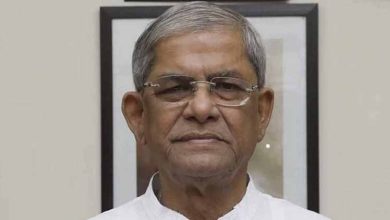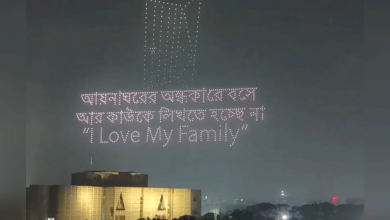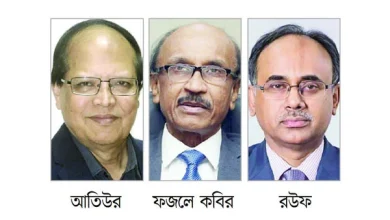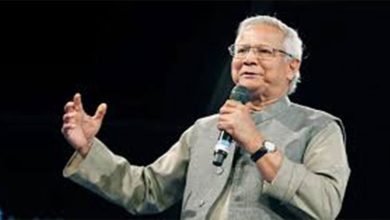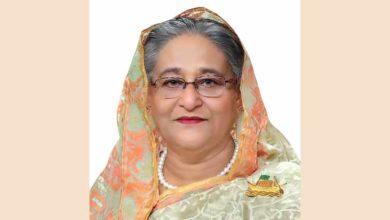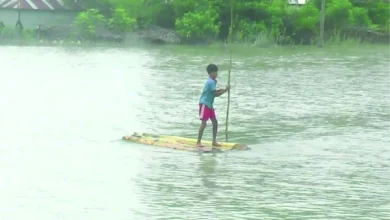Count of a carnage
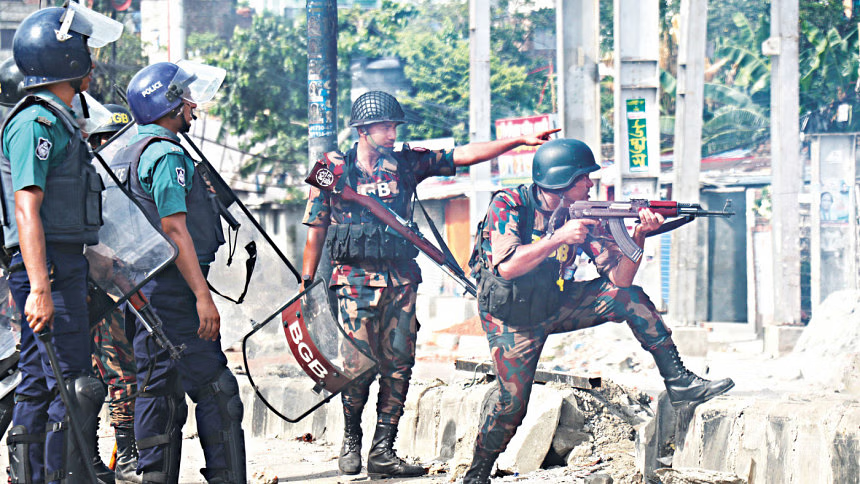
At least 95pc of the victims were killed by gunshots, including live rounds
When Tahir Zaman Priyo, 30, was gunned down around 5:00pm on July 19 just behind Labaid Hospital in Dhaka’s Dhanmondi, his friend Faria Ulfath Syed heard just a single gunshot.
Amid raging street protests and almost ceaseless firing of teargas shells and sound grenades, a panicked crowd ran into Central Road. Priyo, a journalist, and his friends, including Faria, followed, with law-enforcers closing in from front and back.
“Suddenly, I heard one single shot. First, I thought it was a sound grenade. I looked back to see Priyo on the ground. The bullet hit the back of his head,” said Faria.
There are numerous such cases.
The Daily Star has now analysed injuries of 204 victims of the violent clashes centring the quota movement and found that 195 or 95 percent were killed by bullets, including live rounds, rubber bullets and shotgun pellets. Of them, 113 were shot by live rounds that struck mostly in the head, chest, stomach and abdomen. Even a single gunshot to these vital parts of the body can kill in minutes.
As many as 26 were hit by pellets or rubber bullets. Eight families confirmed their loved ones were shot, but could not specify the bullet types. The Daily Star could not reach out to the remaining 48 families, including those of the 21 unidentified bodies. Hospital, morgue and graveyard sources confirmed that they had gunshot wounds.
At least 43 of the victims were students and 32 were children with one as young as four. Unicef also said 32 children had died in the violence.
Over the last one week, The Daily Star scoured death registers at morgues, major hospitals and graveyards in Dhaka and elsewhere and reached out to different communities, and were able to collect information about 204 victims.
Of them, we collected information from families and close friends of 157 victims across the country and gathered details of the nature and extent of the injuries that killed them. Most of them said their loved ones were hit in the head, chest and abdomen with bullets, not pellets.
The Daily Star shared the descriptions of the nature of the injuries with firearm experts and former army officials, who said shootings targeted at these vital areas are meant to kill, and not to disperse.
Such shootings with lethal weapons are a violation of the rules of engagements during civilian protests, they said.
The UN, Amnesty International and Human Rights Watch also called out the excesses by law enforcers that led to the killings of so many people, who were mostly unarmed.
One of the first victims of a targeted shooting was Abu Sayed, 23, a student of Begum Rokeya University in Rangpur. He was standing with his arms stretched out in defiant protest in front of the university, with just a stick in his right hand. Police were clearly seen shooting him multiple times in the chest, wounding him fatally.
“We used whatever little we earned to support his education, hoping that one day he would be successful and better days would come. But bullets ended all that,” his brother Ramjan told The Daily Star after his death.
SHOTS THAT KILLED
Of those fatally hit in the upper parts of the body, 39 were shot in the head, 35 in the chest, 11 in the stomach, eight in the abdomen, eight in the back and two in the neck. The rest 10 of the 113 victims who were killed by live rounds were shot in the leg, arms and other parts of the body.
Four of the victims who were hit in the head were inside their homes and were likely struck by stray bullets. The 35 others were shot while on the streets, according to family members.
Our analysis of the date-wise casualties shows that deaths from gunshots spiked after the Border Guard Bangladesh was called in alongside an overwhelming number of police, Rab, Ansar, riot police, Armed Police Battalion and SWAT (Special Weapons and Tactics) members.
BGB was first deployed on July 17 in six districts on a small scale, but at least 229 platoons of the border guard force were dispatched across the country the next day.
The killings by gunfire continued even after armed forces were called in to contain violence on July 19 – by this time the quota protests boiled over into a larger movement joined by thousands of members of the public.
“Under the law, a written government order [gazette] must be sent to the forces to empower them to shoot at sight. The government order clearly outlines the circumstances under which the forces are allowed to shoot at sight, for example for breaking the curfew. I have not heard of any such written order being published,” Brig Gen (retd) Sakhawat Hossain told The Daily Star.
On August 1, this newspaper visited the Bangladesh Government Press’s online archive and the home ministry’s online bulletin board, but did not find any such written order. The gazette of the nationwide curfew, imposed at midnight on July 19, did not mention any shoot-at-sight order, although Awami League General Secretary Obaidul Quader told reporters that evening that it was a “shoot-at-sight” order.
Chiefs of police and BGB did not respond to our calls and text messages seeking their comments if there was indeed an explicit order to shoot at protesters, and if not, why law enforcers shot so many people indiscriminately.
In a written statement to The Daily Star on August 1, Rab said, “During the recent quota protest, no directive was given to open fire.”
Under the rules of engagement, forces are supposed to crouch in a lying position in situations like this, Sakhawat said.
“This way, they are certain to shoot below the hip to incapacitate the opponent. If they are standing or aiming upwards, then they will hit the fatal parts of the human body. We have seen people dying because of gunshots to the head and chest,” he said.
In many cases, fatal shots were also fired from close range. For example, more than two dozen people died from rubber bullets. This means they were likely shot at point-blank range, Sakhawat said.
At least six victims sustained perforating bullet wounds where the bullet entered and exited the body. A ballistics expert, speaking to this newspaper in the background, said it is possible that they too were shot from close range.
One video of a close-range execution was captured in Rampura on July 19. It shows a man hiding by hanging from the cornice of an under-construction building and two law enforcers shot him point-blank, one after another within seconds.
The video was verified by Qadaruddin Shishir, the fact-checking editor at AFP news agency.
“There are international guidelines on proportionate use of force for law enforcement. Bangladesh security forces violate those standards if they shoot at unarmed protesters, or fire indiscriminately,” Meenakshi Ganguly, deputy director of Human Rights Watch’s Asia Division, told this newspaper on Thursday.
WHAT GUNS WERE USED?
Naima Sultana, 15, a student of Milestone School from Uttara, had gone to the balcony to fetch the clothes hung out to dry when she was hit by a bullet on July 19.
“When the bullet hit her head, she fell to the floor and her brains spilled out. We took her to the hospital immediately but the doctors declared her dead,” said her father Golam Mostofa.
From the photos and videos captured by this newspaper’s reporters and photographers, we have been able to identify some of the lethal weapons used by law enforcement and security forces during the protests.
They include automatic and semi-automatic rifles, light machine guns, machine guns, Chinese AK47, Bangladesh-made BD-08 Type 81 assault rifles and semi-automatic 7.62mm Type 56 assault rifles. Handguns were also used. (Firearms were used against the protesters also by alleged ruling party activists in Dhaka and elsewhere.)
Two gun-experts who have seen the photos and the videos taken by our team helped us identify these weapons used by law enforcers and security forces.
In front of the Jatiya Press Club on July 19, Ansar members were found wielding AK47 guns, as well as the semi-automatic 7.62mm Type 56 assault rifle.
“Chinese” AK47 assault rifles were spotted in the hands of BGB members also in front of Jatiya Press Club. In Rampura, a BGB man armed with the same AK47 version was photographed firing at protesters on July 19.
In the capital’s Khamarbari on July 20, Bangladesh infantry were seen carrying light machine guns. The Gazipur-made BD-08 Type 81 assault rifle was spotted in Bijoy Sarani the same day.
“The 7.62mm rifles used by police have two modes — single firing and rapid firing. In the videos we have seen, they have mostly used the rapid-fire mode or automatic mode which are mostly used in wars,” said Brig Gen (retd) Sakhawat.
“The 7.62mm rifles are one of the best Chinese killing machines, which were earlier used by the Bangladesh Army and are now available to the BGB and police,” he added.
The spotting of such lethal weapons on key dates corresponds with the death toll on those days. According to The Daily Star’s latest tally, July 19 was the deadliest day, with 62 people dying only in fatal shots across the country.
A vast majority of them succumbed to their injuries that very day, while a handful hung on to life for the next two or three days.
The second deadliest day was July 20, with 30 people suffering fatal shots. The rest of the people were shot between July 16 and July 24.
On the dates, including July 19 and 20, that saw some of the highest casualties in areas such as Jatrabari, Rampura, Badda, Mohammadpur and Mirpur in Dhaka, The Daily Star reporters and photographers witnessed and documented heavy firing by police, Rab, BGB members and Armed Police Battalion on the ground, as air support was also called in.
“These forces [army and BGB] were deployed to aid the police, and are armed with lethal weapons. They will not be coming to the ground with sticks and rods. The question is whether they should have been called in to tackle unarmed protesters in the first place,” said Sakhawat.
KILLING HOTSPOTS
As violence spread across Dhaka and elsewhere, Jatrabari and its adjacent areas, including Kadamtali, Matuail and the Chittagong Road leading into Narayanganj’s Siddhirganj, saw some of the fiercest clashes between heavily armed law enforcers and protesters, both students and non-students.
For over a week, demonstrators blocked the commercially important Chittagong Road despite the heavy firing of live bullets, sound grenades, and teargas shells from the ground as well as from the air, as Rab and BGB helicopters were called in for the first time in independent Bangladesh to tackle a civilian movement.
At least 44 people were killed in these areas, mostly in shootings. Of them, at least 30 died in Jatrabari alone — six on July 18, 12 on July 19, seven on July 20, three on July 21.
One of the July 19 victims is a policeman, who was hacked to death.
Other hotspots in Dhaka include Rampura, Badda, Dhanmondi, Mohammadpur, Uttara and Savar.
Outside Dhaka, there were reports of protests and violence in over 20 districts, including Rangpur, Rajshahi, Bogura, Chattogram, Khulna and Narsingdi.
At least 52 people were killed outside Dhaka.
DISREGARD FOR LIFE
Although many died in direct clashes, attacks and counter-attacks, many also had nothing to do with the protest but got killed anyway.
Abdul Ahad, 4, is one of them. The boy from Jatrabari was watching the protests from his balcony, when a bullet struck his head. He died at Dhaka Medical College Hospital.
In Mohakhali, Goni Mia was going home, parking his rickshaw in a garage. He was hit by a bullet in the chest, and he died at DMCH a few hours later, his brother Hafiz Uddin told The Daily Star.
Although most people were killed in shootings, several died of beating and at least one was hacked.
Overall, the victims, aged between four and sixty years, come from various professions and backgrounds. As many as 50 were low-income people, 26 private jobholders and 21 were traders or businesspeople.
“The high death toll is a shocking indictment of the absolute intolerance shown by the Bangladeshi authorities to protest and dissent. The unlawful force used against protesters, including lethal force as verified by Amnesty International, shows a callous disregard for the right to life and an abject failure by law enforcement officials to uphold their obligations under domestic and international human rights law,” said a spokesperson of Amnesty International, speaking to this newspaper.
Note: This newspaper’s list of victims is as of August 1, and is not comprehensive because not all the dead bodies ended up in the major hospitals or graveyards tracked by The Daily Star. For example, this newspaper has a photo of a dead bearded man wearing a lungi with a gunshot wound to the head lying on the steps of a clinic in Rampura, but failed to get any records of a man matching that description from the corresponding morgues on that day. As a result, that man has not been counted in our tally. Many hospitals did not keep any records of the dead, while many families collected the bodies of their loved ones from the scene and The Daily Star could not contact them.
Reporting: Zyma Islam, Shaheen Mollah
Additional reporting: Asifur Rahman, Sajjad Hossain and Mashfiq Mizan Mugdho
Research: Tahira Shamsi Utsa, Shuchismita Tithi, Nilima Jahan, Sharmin Joya, Sabbir Hossain, Tasnim Mouri, Nafis Almas Siam, Rakshanda Rahman Misha, Aaqib Hasib, Mahiya Tabassum, Zayed Ibne Quadir, Mehedi Rahman Ullash, Zareen Nawar Shazee, Naimur Rahman and Ziauddin Alamin.
Our district correspondents Aminul Islam from Mymensingh, Jahidul Islam from Narsingdi, Sourav Hossain Siam from Narayanganj, Khalid Bin Nazrul from Cumilla, Mostafa Shabuj from Bogura, Monjurul Haque from Gazipur, Mokammel Shuvo from Cox’s Bazar, Shimul Nazrul from Chattogram, Kongkon Karmaker from Dinajpur, Sushanta Ghosh from Barishal, Aklakur Rahman Akash from Savar, Dwoha Chowdhury from Sylhet, Jahid Hasan Roni from Shariatpur and Anis Mondol from Kushtia contributed to this report.


